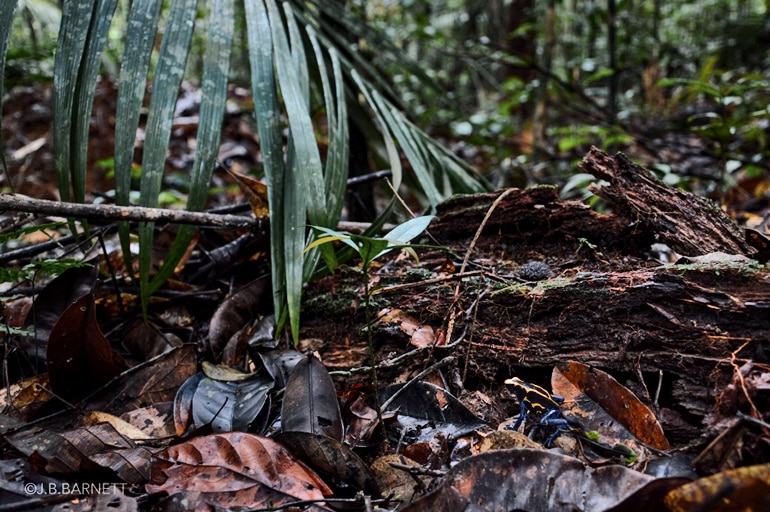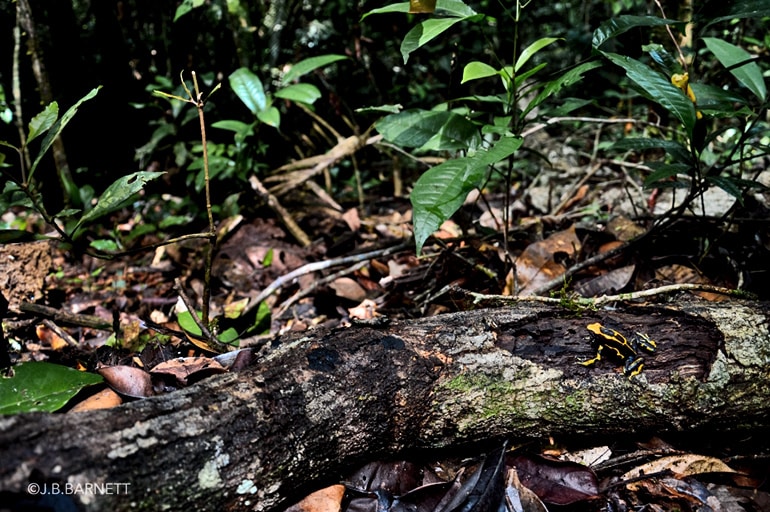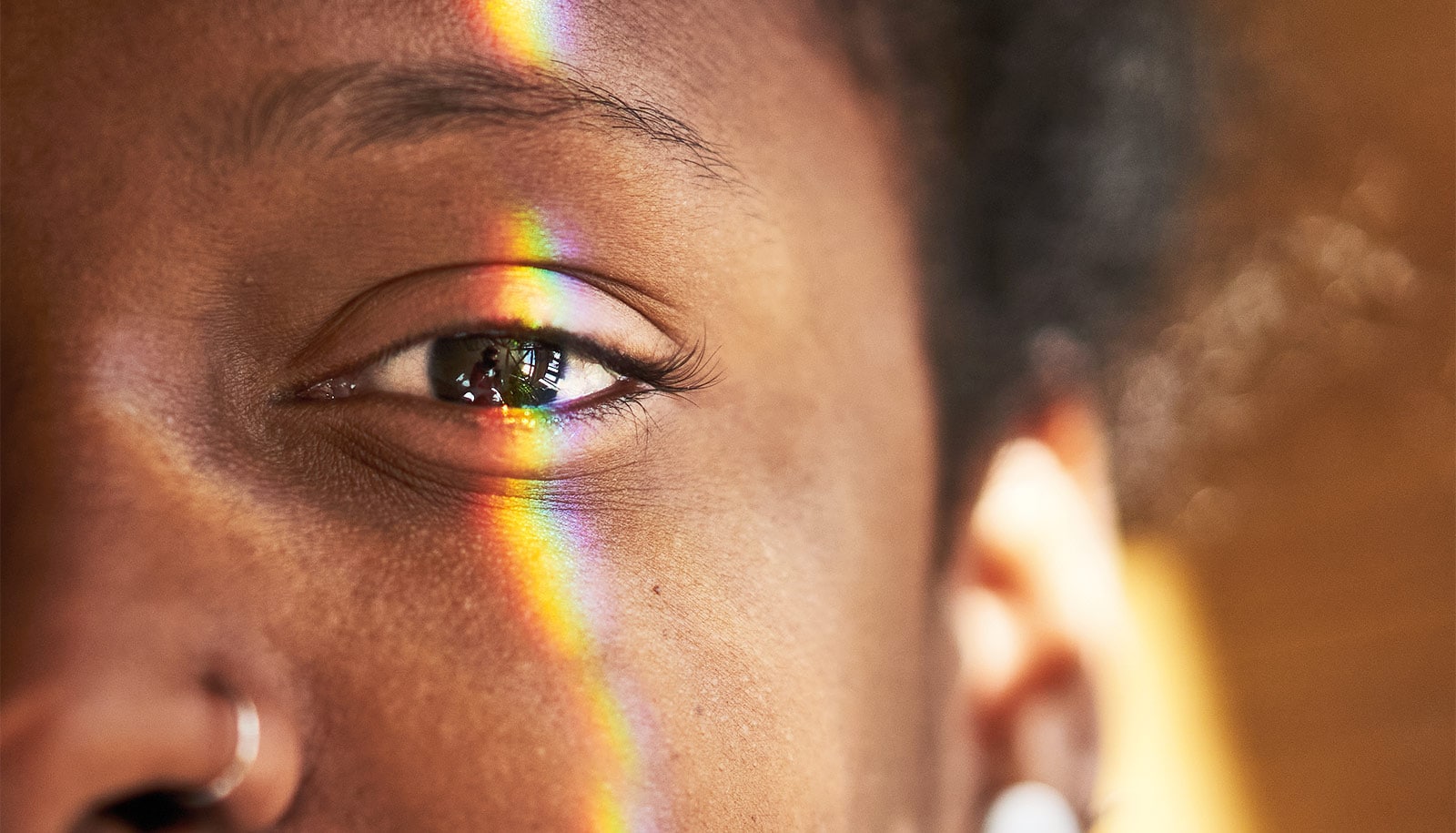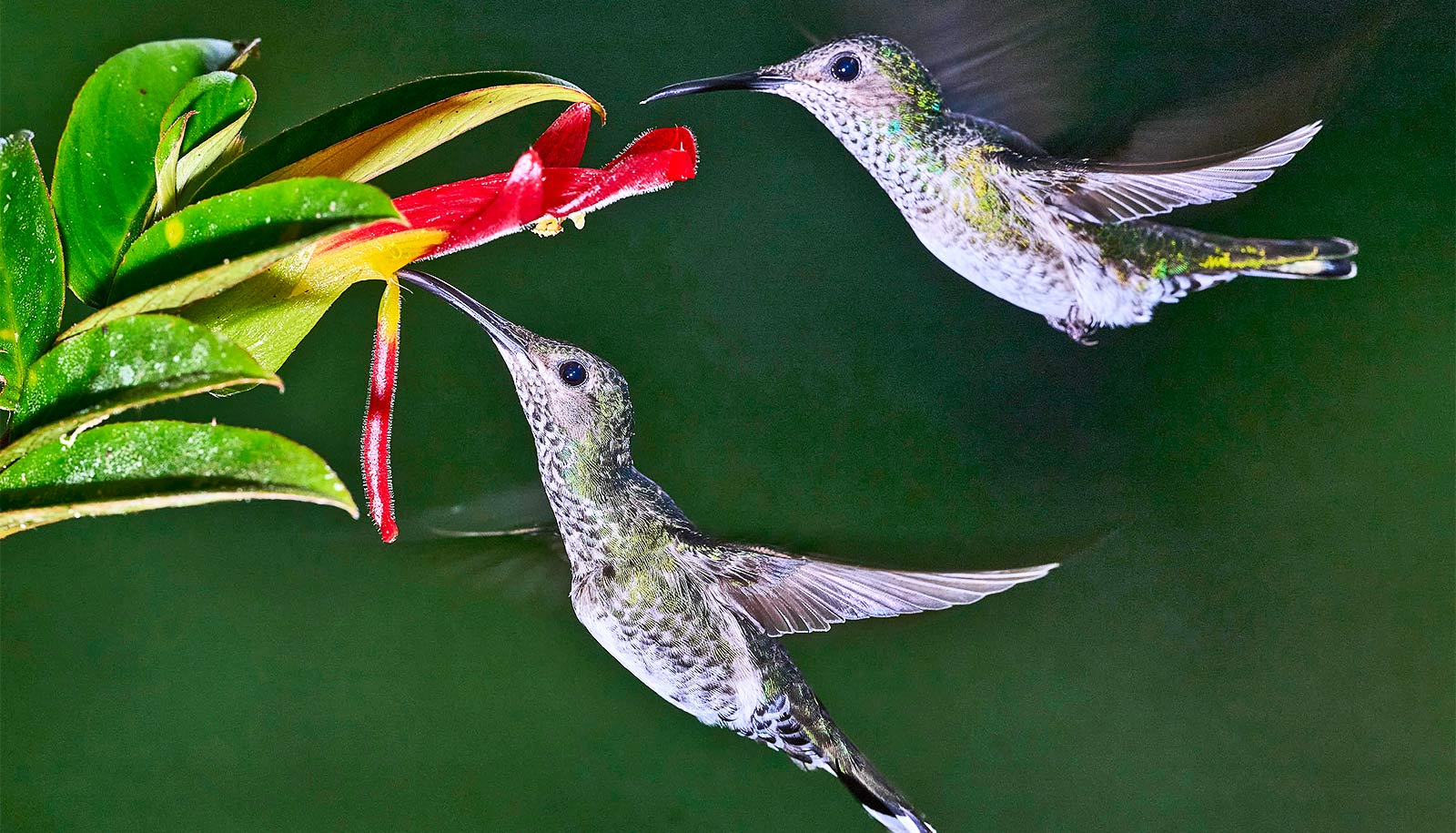The bright color pattern on poison dart frogs acts as camouflage, new research suggests.
Poison dart frogs are well known for their deadly toxins and bright colors, which have made them a classic example of warning coloration. The Dyeing Dart Frog, for example, is highly toxic and warns its predators with a bright yellow-and-black pattern.
However, the new, counterintuitive research have revealed that the color pattern does more than simply signal “danger”.
“Effective as warning signals are, it’s not necessarily the best strategy to be maximally conspicuous,” says Jim Barnett, a postdoctoral fellow at McGill University who completed this work while pursuing his PhD at the University of Bristol, UK.

“Certain predators have evolved tolerance of toxins that would be deadly for humans, and some individual predators may have not encountered the warning signal prey before (a dangerous mistake for the predator, but also for the frog),” Barnett says. “So, color patterns that could be distinctive close-up, but work as camouflage from a distance, would provide a clear advantage.”
Combining fieldwork in the jungles of French Guiana, computational modeling, and laboratory visual search experiments, Barnett and his colleagues investigated how the Dyeing Dart Frog uses its colors to balance the benefits of effective warning signals with the advantages of concealment.

They found that, despite being highly conspicuous at close range, the particular colors and their arrangement allow the pattern to blend together to form background-matching camouflage when viewed from a distance.
The frog’s pattern, therefore, allows it to get the best of both worlds: high fidelity camouflage until a predator discovers it, at which point its bright, highly salient, warning signal becomes clear.
How poison frogs keep from poisoning themselves
“How many other animals use ‘distance-dependent coloration’ to balance competing evolutionary pressures is yet to be explored,” adds coauthor Innes Cuthill, a professor at the University of Bristol.
“Being able to signal when close to a would-be mate, whilst remaining inconspicuous to more distant predators would seem beneficial. So too for human applications such as military camouflage, where recognition by allies is as important as concealment from foes. Also, signage that only need be clear at the distance where the information is needed, but might be distracting if detected earlier.”
The research appears in the Proceedings of the National Academy of Sciences.
Source: McGill University



